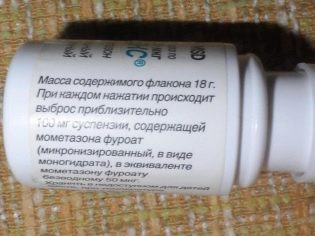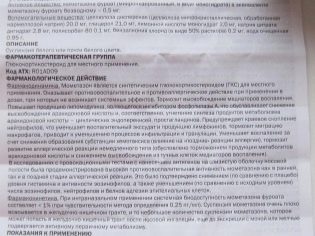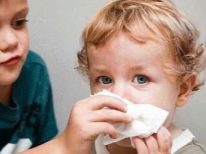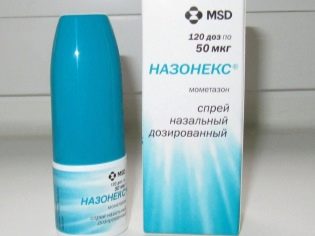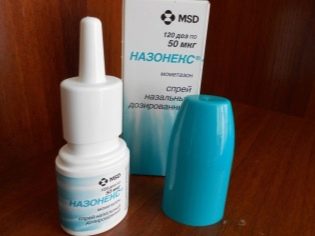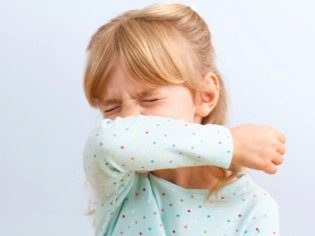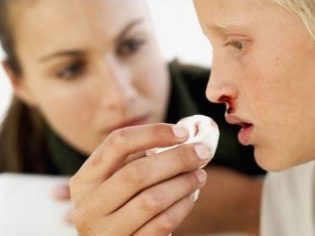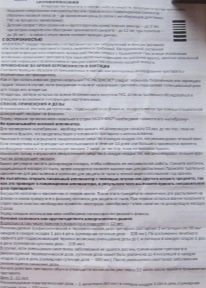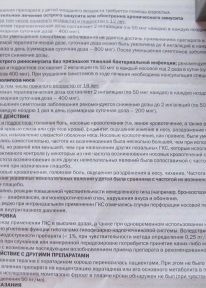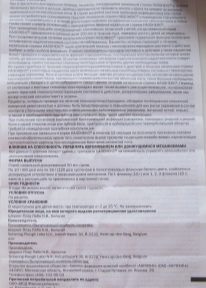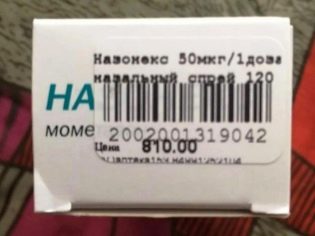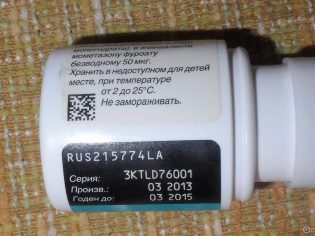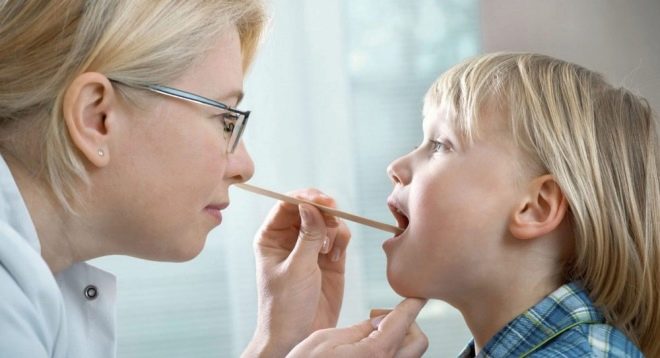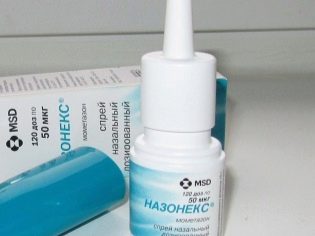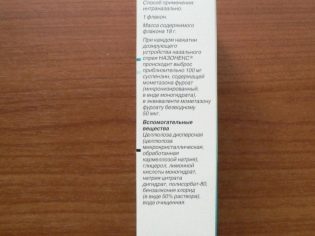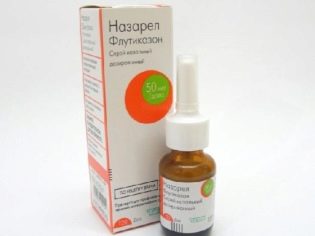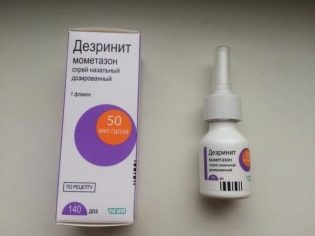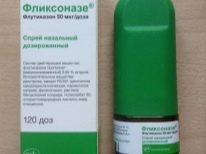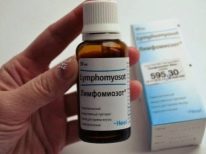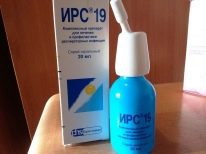Should I use Nasonex with enlarged adenoids?
Adenoids (as well as adenoid growths or adenoid vegetations) are called an increase in the amygdala, located in the nasopharynx. This pathology is often diagnosed in children 3-7 years old and is due to an increase in the number of lymphoid tissue. With such an increase, breathing through the nose is difficult, hearing can decrease, the child snores or snores at night, often suffers from viral infections. One of the ways out is called tonsil removal, but often parents want to avoid surgery and turn to ENT doctors for conservative therapy.
In the medical treatment of adenoids use different local remedies, among which there are Nasonex. This hormonal medicine has proven itself in the treatment of rhinitis and sinusitis of different nature (especially allergic). But is it worth it to use in children with adenoids and how to properly drop this medicine?
Release form and composition
The drug is released in the form of a white suspension placed in small plastic bottles that have a protective cap and a dispensing spray device. Such forms as tablets, dragee, drops, syrup, capsules or injections, the drug is absent.
The active compound of Nasonex is called mometasone furoate and is contained in an amount of 50 µg per spray dose. 60 doses of this substance (then the weight of the medicine bottle is 10 g) or 120 doses (such a bottle weighs 18 g) can be inside one bottle, and one box can contain from 1 to 3 bottles. Additionally, there are substances in the medicament, due to which the drug does not deteriorate and remains liquid. These are glycerol, polysorbate 80, benzalkonium chloride, dispersed cellulose and other compounds.
How does it work?
Since mometasone is a glucocorticoid hormone, this provides Nazonex with anti-inflammatory and antiallergic properties. If you apply the spray in the dosage that is specified in the annotation, the tool acts only locally and is absorbed in an amount of less than 1%. Once on the mucous membrane, mometasone prevents the release of inflammatory mediators and affects the metabolic transformation of arachidonic acid, which leads to a decrease in the activity of inflammation. In addition, this hormone prevents accumulation of neutrophils, which eliminates exudation and infiltration of the inflamed area.
The composition of the drug includes glycerol, so the drying of the mucous membrane during treatment does not occur. On the contrary, the injections promote the moistening of the nasal cavity, which positively affects the epithelium and its regeneration.
When is it used?
In pediatric practice, Nazonex is most often prescribed for allergic rhinitis, which can be either seasonal (occurs during the flowering period of plants) or year-round. Adolescents are also prescribed for sinusitis and rhinosinusitis. In case of such pathologies, the spray is used together with other medicines, for example, antibiotics. In addition, during adolescence, the agent can be used prophylactically, and Nasonex is recommended for adults with nasal polyposis.
Is it prescribed for adenoids?
Although the list of indications indicated in the annotation to the spray, there is no adenoidal growths or adenoiditis, however, Nasonex and other local hormonal medications are quite often prescribed for children over two years with such pathologies. In this case, use the drug in a child without a preliminary examination of the ENT doctor is impossible.
Suspect adenoids in a baby can be due to the following symptoms:
- The baby hardly breathes through the nose during the day, and during sleep his mouth is often open.
- At the crumbs systematically laid the nose and secreted mucus.
- The child’s sleep is disturbed, it is shallow and with frequent waking up.
- The timbre of the baby's voice has changed and a nasal twang appeared.
- The child has enlarged lymph nodes and there are complaints of weakness.
- A small patient often has a dry cough or a slightly elevated temperature.
If at least some of these manifestations of adenoids are present in a baby, it is recommended to consult an ENT specialist who will determine if the small patient needs Nasonex.
Contraindications
Spray can not be used in children under 2 years of age, and with sinusitis means are not appointed until the age of 12.
In addition, Nasonex is contraindicated:
- With intolerance to any component of the suspension.
- In the case of a recent injury or surgery in the nasopharynx, since the action of mometasone will interfere with normal healing.
If a patient has tuberculosis or another active infectious process (both viral and fungal or bacterial in nature), the use of Nasonex requires monitoring by a physician.
Can it harm a child?
Due to its low absorbability and only local action, Nasonex does not impair the work of the adrenal glands, does not provoke growth retardation, a fungal infection and other systemic side effects of glucocorticoids. Theoretically, such problems are possible with very long treatment, but they were not identified in studies.
Occasionally, during therapy, a child may have sneezing, headache, nosebleeds. In addition, the drug can provoke allergies and irritation of the mucous membrane, but this reaction occurs in isolated cases.
When a single dose is exceeded, no negative effects are usually noted, since mometasone has a rather low bioavailability. Only prolonged use in very high dosages can adversely affect the patient's health.
Instructions for use
Before using the spray, it is necessary to press the sprayer several times until the spray appears. So do after a long break in the use of funds (2 weeks or more). In addition, before inhalation, the vial with the suspension should be shaken, and if the duration of treatment is long, it is important to periodically wash the nozzle and cap with warm water.
To splash Nasonex into the nasal passages, the head of the small patient should be slightly deflected to one side. The drug is first administered in one nostril, and then pshikatsya in the other nasal passage in this dosage:
- At the age of 2-11 years - 1 injection (50 μg each). According to the scheme, the drug is used once a day, that is, the daily dosage is 100 micrograms.
- At the age of 12 years and older - 2 injections at once (100 µg each). The tool is also often prescribed once a day, then the daily dose will be 200 micrograms, but sometimes the spray can be administered twice in a daily dose of 400 micrograms. In addition, in the absence of an effect, the doctor can still increase the dosage to 200 mg per dose (4 inhalations each), which corresponds to a daily dose of 400-800 mg. As soon as a specialist will notice a sufficient therapeutic effect, the dosage is reduced.
Features of purchase and storage
To buy Nasonex in a pharmacy, you first need to get a prescription from a pediatrician, LOR, or another doctor. On average, for a bottle containing 60 doses, you need to pay 450 rubles, and the price of a bottle of 18 g of the drug is 700-800 rubles.
It is recommended to keep the spray at home at a temperature below +25 degrees, but the medicine cannot be frozen. To store the vial, it is advisable to find a place in which the drug will be inaccessible to children. Shelf life suspension - 2 years. If the date on the box has expired, the medication must be discarded.
Doctors reviews
Specialists respond differently to the treatment of nasonex adenoids in children. If the effectiveness of the drug in relation to allergic rhinitis and sinusitis is recognized by all doctors, then there is a debate about the feasibility of treatment with adenoids spray. Some doctors say that the use of the drug had a positive effect on the clinical picture. In their patients, they noted an improvement in nasal breathing, more rare acute respiratory viral infections, a decrease in mucus secretion and the disappearance of snoring.
However, other doctors believe that Nasonex with adenoids is ineffective and can only help in the elimination of adenoiditis, if such patients have it. Among the number of experts who doubt the need for a spray is a popular pediatrician Komarovsky. In his opinion, in the treatment of adenoids, it is worthwhile either to use waiting tactics or to have an operation when the degree of increase in the amygdala is already significant and this interferes with the child.
The fact in which cases it is necessary to remove the adenoids, will tell the famous pediatrician E.O. Komarovsky.
There are many ENT doctors who prescribe Nasonex, but do not claim that it is a panacea for adenoids. They emphasize that the use of Nasonex and its analogues is unable to help children who already require adenotomy (with an increase of more than 2 degrees). However, such specialists often prescribe a spray when diagnosing adenoids, and after several months of treatment they evaluate the result. If any significant effect is not achieved, the child is sent for surgery.
Parent reviews
Many young patients, according to the mothers, had a runny nose after Nasonex injections, nose breathing was easier, snoring disappeared at night, and there was less ARD. Portability of the drug most parents call good, and side effects occur in very rare cases.
Among the drawbacks, the high cost of the spray is most often noted, but they are not in a hurry to buy other hormonal drugs cheaper, because Nasonex is not only better than its counterparts, but also more studied. However, there are also negative reviews, in which mothers complain about the lack of effect in adenoids. They say that even after a long course of treatment, the amygdala remained enlarged and had to have an operation.
Analogs
Other preparations of mometasone may serve as a replacement for Nasonex (Disrinit, Nosefrin) or other local hormone medications (Avamys, Fliksonaze, Nasobek, Nazarel). They have an anti-inflammatory effect and very effectively treat allergic adenoiditis. In addition, children with an increase in adenoids are often discharged. Euphorbium Compositum, Thuja Oil, Lymphomyosot, IRS 19, Job kid and other means. Most of them are related to homeopathy, therefore, the opinion of doctors regarding their use is different (some recommend such means, while others call ineffective).
In any case, treatment should be selected together with a specialist, and if medicaments, breathing exercises, fitosbirds, nasal washing and other measures do not help, it is necessary to discuss the issue of surgery, since with extensive growth adenotomy is considered an ENT physician the most effective help.
For more on adenoids, see the next issue of Dr. E.O. Komarovsky.


